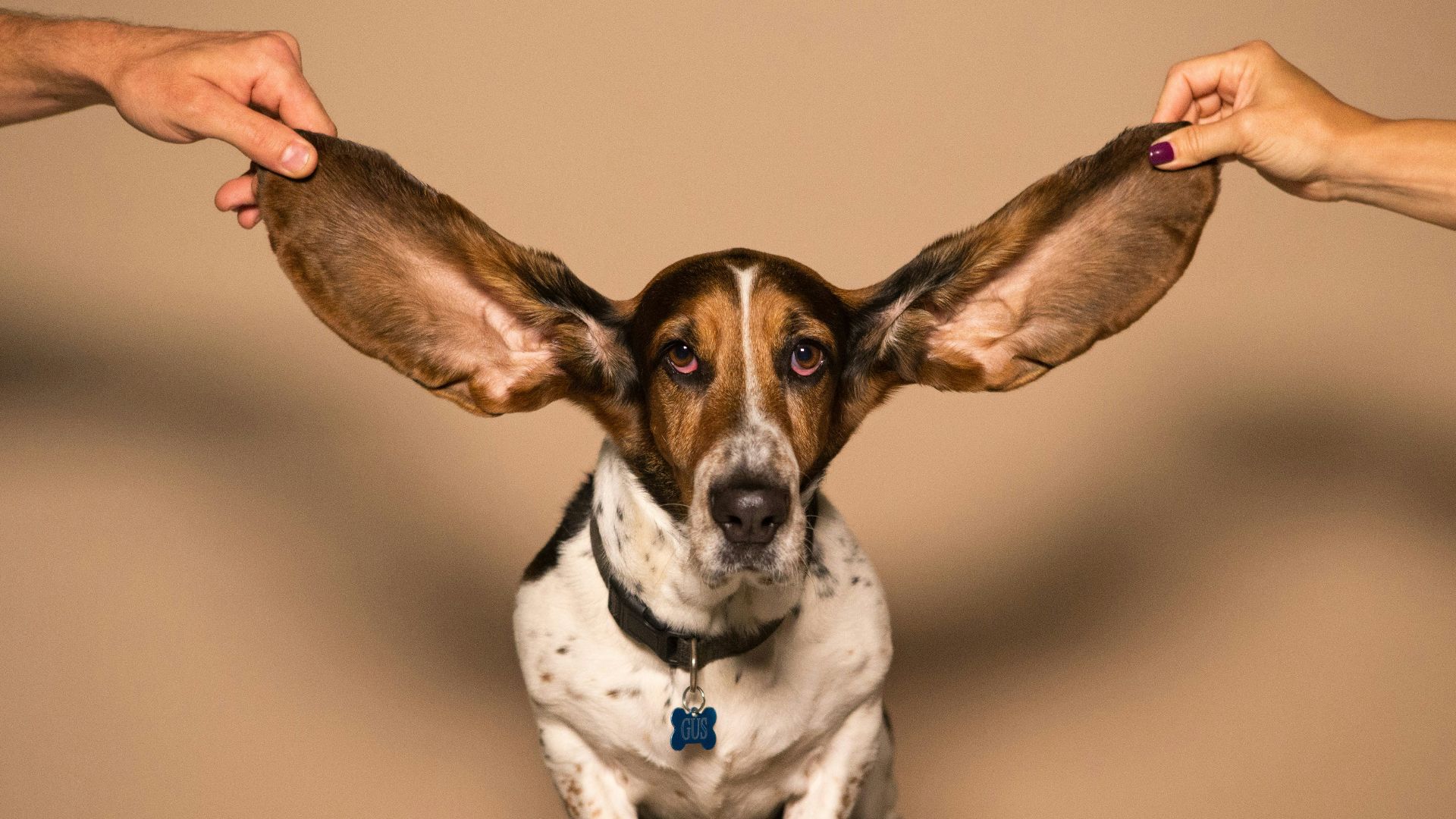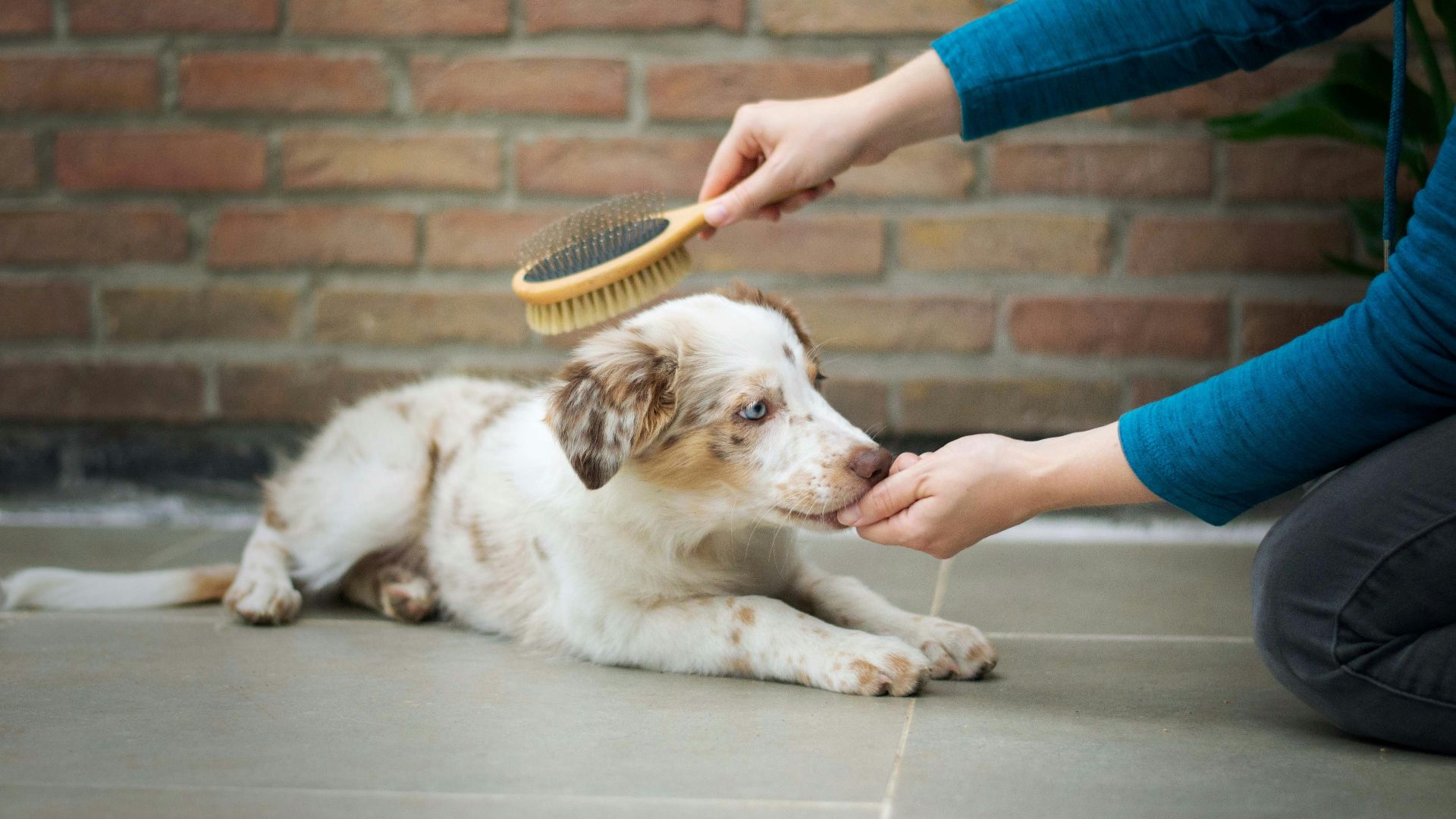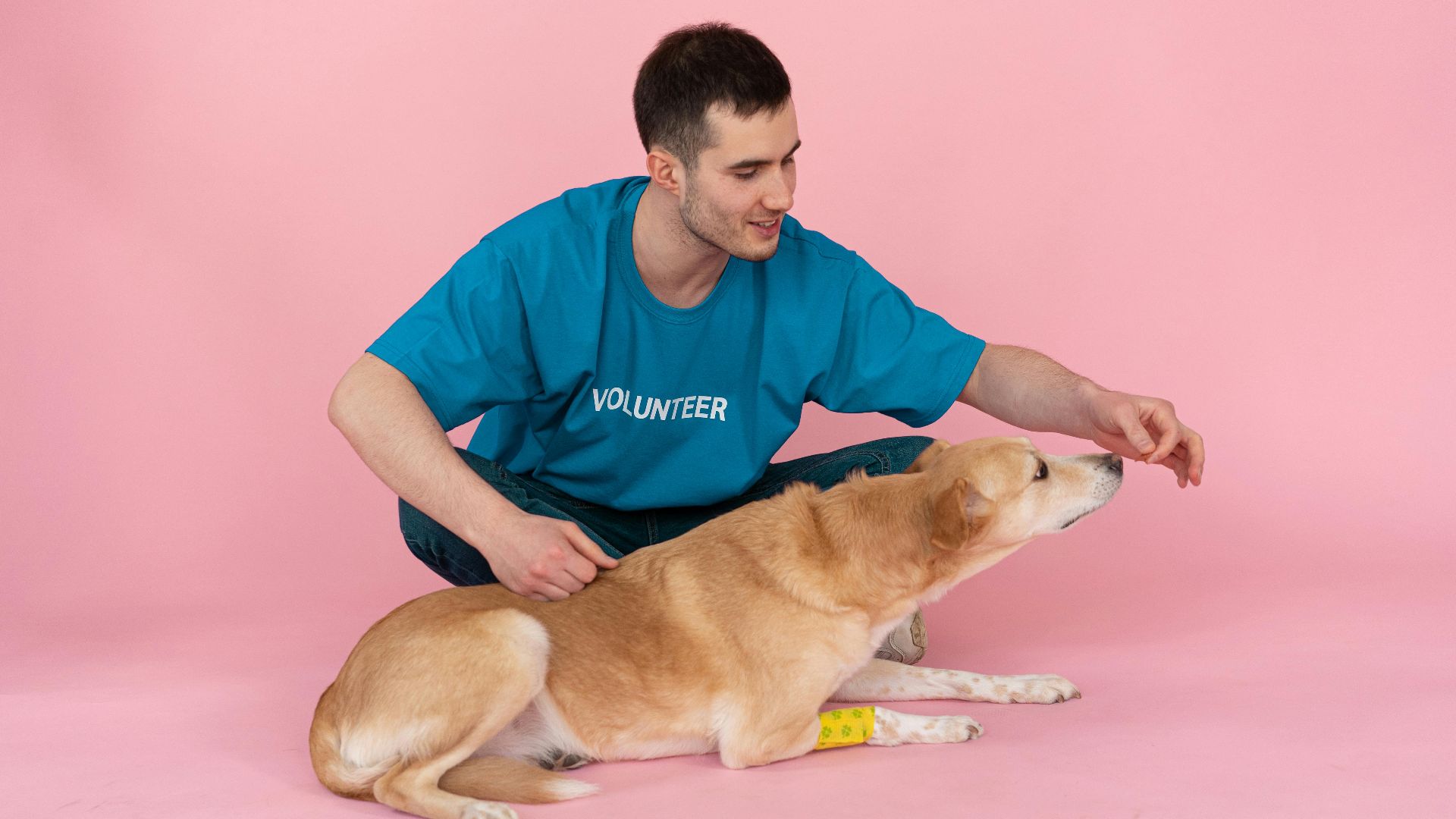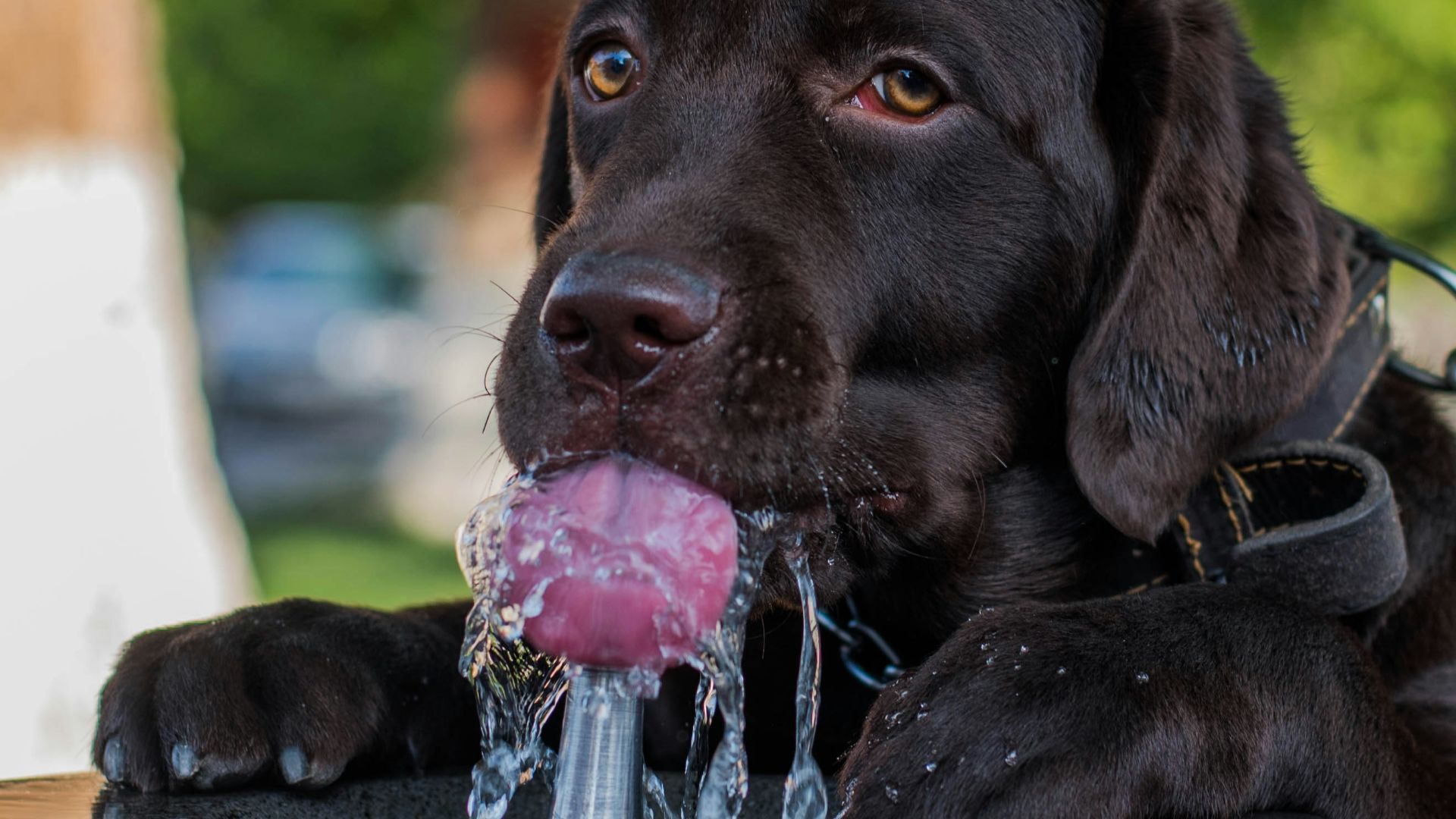What’s Going on Beneath All That Fur?
For all the joy puppies bring to our lives, they sure do stress us out! Whether it’s fleas and ticks or an uncomfortable yeast infection, dogs can experience any number of skin conditions. Not to fear, we’ve broken down a few common ones and some preventative measures you can take to avoid them!
1. Allergies
Pups have allergies the same as us—the only difference is they can’t verbally warn us of incoming symptoms. Your pooch might display anything from sneezing and licking to inflamed skin and rashes. Keep an eye out for any incessant gnawing, particularly of their paws.
2. Hot Spots
Also known as acute moist dermatitis, hot spots are easily identified on your pup. Skin is usually quite red and inflamed, and may even ooze pus. Though you can find them just about anywhere, they’re more common on the legs and hips, and can stem from allergies, infections, or even simple boredom.
3. Ear Infections
Speaking of infections, our dogs can suffer one at any time. Among the more common, however, are ear infections. The good news is that Fido will let you know he’s in discomfort, which makes it easier to get to the vet. Look out for things like head shaking, scratching, and a cheese-like odor from the area.
4. Fleas
No one wants to deal with fleas, least of all your dog, but those pesky bugs can sneak onto your dog through clothing or contact with other animals. Your pooch will likely experience skin irritation, hair loss, and incessant itching.
5. Ticks
Ticks are no joke, and nasty-looking parasites can pop up anytime if you’re not careful. Once they latch onto your dog, you could see any number of frightening symptoms: red skin, itching, lethargy, and loss of appetite are only a few.
6. Seborrheic Dermatitis
Even if you’ve never dealt with it before, you’ll know seborrheic dermatitis when you see it—or, in this case, smell it. A foul odor typically accompanies dry, flaky skin (or sometimes greasy skin) to create lesions, inflammation, or even hair loss.
 Priscilla Du Preez 🇨🇦 on Unsplash
Priscilla Du Preez 🇨🇦 on Unsplash
7. Dandruff
Dandruff is already annoying on our own heads, but our poor pups aren’t safe either! Just like with humans, you’ll notice the same telltale signs: white flakes in their fur, irritated skin, and plenty of scratching.
8. Acral Lick Dermatitis
Does your pup lick and lick and lick? It’s that very behavior that causes skin troubles down the line. Pet parents may notice irritation, inflammation, or even some bleeding after a lengthy lick session. It’s worth bringing your dog to the vet; together, you can determine the underlying cause of the behavior and stop it in its tracks.
9. Yeast Infection
Yeast infections pop up anywhere from a dog’s ears to their wrinkles (especially with certain breeds). Keep an eye—and nose—out for any funky odors, head shaking, licking, or rashes. If you notice anything, bring them to the vet.
10. Skin Tags
We have good news and bad news about skin tags. The good news is that they’re usually benign bumps found on high-traffic areas like the neck, mouth, and armpits. They’re easily removed, too! The bad news is that they’re still a pain for the vet to remove, and can look a little scary at first glance.
Pet parents know the stress of ownership—and skin conditions don’t make it any easier! Luckily, you can take the right steps to keep your pet in good health.
1. Preventive Medication
At the end of the day, nothing beats good preventive care. Seasonal supplements or medications keep ticks, fleas, and heartworm away, which are giant weights off your shoulders. Though they’re a little pricey, they’re more than worth it for your pooch.
2. Medicinal Baths
Don’t be afraid to treat skin conditions at home! If your vet gives the green light, you can always soak your fur baby in a good medicinal bath (oatmeal baths are excellent for dry, itchy skin). Just make sure you use the right products and dry their coats properly afterward.
3. Regular Grooming
How often you groom your dog depends on their breed. Some might get away with a good weekly brushing, while others need daily care. Everything from their teeth and nails deserves proper care as well—and that diligence will keep your pet nice and healthy.
4. Know Your Dog
A key part of pet ownership is understanding your dog. When you know their breed, their health concerns, their coat length, and their behaviors, you can take the right steps to give them exactly what they need.
5. Ask Your Vet Questions
When in doubt, consult your vet! Professionals can spot things we wouldn’t even think to look for. They can also put together a comprehensive plan for your pooch, which could include certain supplements or medications.
6. Proper Nutrition
Puppy care begins at home. The right meal plan includes a balanced diet of protein, omega-3s, and necessary vitamins—all of which give your dog healthy skin (among other things). You can always speak with your vet about any dietary restrictions or even consult your local pet store.
7. Go For Regular Check-Ups
Puppies are like people: they need annual check-ups! Even if your dog seems perfectly healthy, it’s important to bring them in at least once a year to ensure they stay that way. It’s especially crucial as your dog ages.
8. Hydration
Where would any of us be without a nice glass of water? Dogs need to stay hydrated, and that very hydration is part of what keeps their skin healthy. Always make sure they have a bowl of fresh, clean drinking water in the house, and bring some with you during those hot summer walks.
9. Consider Supplements
It’s always best to speak with your vet before putting your dog on any supplements. Once everyone agrees, you can always invest in supplements for their joint health, digestion, or skin. Most can be found in your local pet store as well, which thankfully means you won’t have to spend much.
10. Keep an Eye Out at Home
No one’s with your dog more than you, so keep an eye out for any changes in their health. If you take them on a hike, do a quick tick check when you get home. If you notice that your dog is licking more often, inspect the skin. When you stay on top of little changes, you can get them the care they need ahead of time.



























